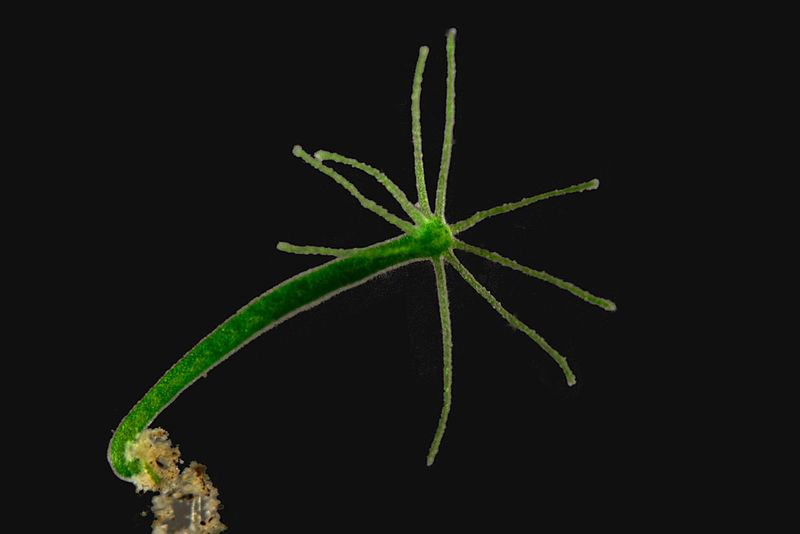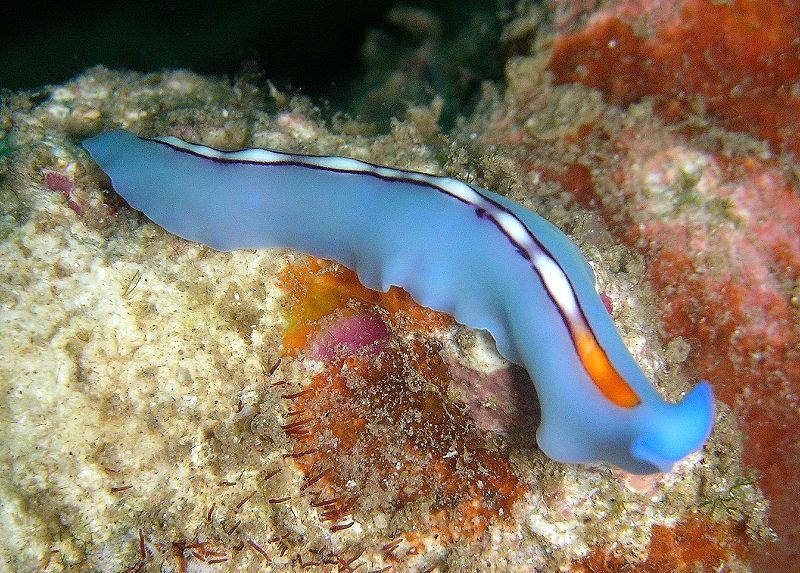Difference Between Coelenterates and Platyhelminthes
Key Difference – Coelenterates vs Platyhelminthes
Kingdom Animalia is divided into two main categories as vertebrates and invertebrates. Invertebrates are further divided into phyla out of which the two most primitive phyla are the Phylum Coelenterate and Phylum Platyhelminthes. Phylum Coelenterata, also referred to as Cnidaria, is the most primitive invertebrate type and are diploblastic animals possessing only the ectoderm and the endoderm. Phylum Platyhelminthes are mostly parasitic, and they are triploblastic animals where the ectoderm is specialized with a prominent epidermis. The key difference between Coelenterata and Platyhelminthes is based on the germ layers of the organism. Coelenterates are diploblastic invertebrates whereas Platyhelminthes are triploblastic invertebrates.
CONTENTS
1. Overview and Key Difference
2. What are Coelenterates
3. What are Platyhelminthes
4. Similarities Between Coelenterates and Platyhelminthes
5. Side by Side Comparison – Coelenterates vs Platyhelminthes in Tabular Form
6. Summary
What are Coelenterates?
Coelenterates are triploblastic coelomates which are mostly found in aquatic, mostly marine environments. They exist in isolation or as colonies. They show a holozoic nutrition pattern and both extracellular and intracellular digestion takes place. They have a special organ called nematocyst, which is used to protect itself from predators. They have an incomplete nervous system, and an incomplete circulatory system. Coelenterates exist in two main forms. The two main forms are medusa and polyp. They reproduce both sexually and asexually. Asexual reproduction takes place via budding. They can fertilize both internally and externally.

Figure 01: Hydra
Coelenterates are further divided into three main classes namely; Class Hydrozoa, Class Scyphozoa, and Class Anthozoa. Class Hydrozoa are marine forms of Coelenterata. They are predominantly in the polyp form, and the examples include Hydra, Obelix, and Tubularia. Class Scyphozoa are marine free-living forms of coelenterates. Medusa form is the predominant form where the scyphozoans possess an umbrella-shaped structure. The examples include Aurelia (Jellyfish). Class Anthozoa marine organisms which exist either in solitary or colony forms. The examples include Metridium (Sea anemone).
What are Platyhelminthes?
Platyhelminthes is also referred to as flatworms and belong to the group of invertebrates. Platyhelminthes are mostly parasitic, and they are triploblastic acoelomates. They show bilateral symmetry, and the body is dorso-ventrally flattened. Organisms under the phylum Platyhelminthes do not possess a complete alimentary canal but have a prominent pharynx structure which aids in digestion. A developed circulatory system is absent but has a specialized organ for excretion known as protonephridia with flame cells. They respire through simple diffusion of gases across the body surface. Reproduction in flatworms can be either in sexual forms via gamete formation or through asexual methods. Asexual methods of Platyhelminthes include regeneration and fission.

Figure 02: Platyhelminthes
Phylum Platyhelminthes is further classified into three main classes- Turbellaria, Trematoda, Cestoda. Class Turbellaria are the less parasitic forms of Platyhelminthes. They are found in freshwater environments and usually do not possess hookers or suckers, unlike the other two classes. The examples include Planaria, Bipalium. Class Trematoda, consists of the extremely parasitic forms of Platyhelminthes. They are intracellular parasites and possess prominent suckers and hooks. These enable the organism to confer itself as an intracellular parasite. Examples of class Trematoda are Fasciola hepatica (Liver fluke) and Diplozoon. Class Cestoda are also a class of parasitic Platyhelminthes. They also possess hooks and suckers. The examples of organisms belonging to class Cestoda are Taenia spp. (tapeworm) and Convoluta.
What are the Similarities Between Coelenterates and Platyhelminthes?
- Both belong to the kingdom Animalia and category invertebrate.
- Both are aquatic organisms.
- Both do not have a complete digestive system.
- Both undergo sexual and asexual relationships.
- Both can be parasitic.
What are the Differences Between Coelenterates and Platyhelminthes?
Coelenterates vs Platyhelminthes | |
| Phylum Coelenterata also referred to as Cnidaria, is the most primitive invertebrate type where they are diploblastic animals composed of only the ectoderm and the endoderm. | Phylum Platyhelminthes are mostly parasitic, and they are triploblastic animals where the ectoderm is very specialized with a prominent epidermis. |
| Organization | |
| Coelenterates show tissue level organization. | Platyhelminthes show organ level organization. |
| Types | |
| Coelenterates include solitary, sedentary and free-living forms. | Platyhelminthes include free-living and parasitic forms. |
| Specialized Organs | |
| Coelenterates have nematocysts for protection. | Platyhelminthes have pro-nephridia with flame cells for excretion. |
| Symmetry | |
| Coelenterates show radial symmetry. | Platyhelminthes show bilateral symmetry. |
| Cnidocytes | |
| Cnidocytes are present in Coelenterata. | Cnidocytes are absent in Platyhelminthes. |
| Coelom | |
| Present in coelenterate. | Absent in Platyhelminthes. |
| Fertilization | |
| Both internal and external fertilization | Only internal fertilization |
| Classes | |
| Hydrozoa, Scyphozoa, Anthozoa | Turbellaria, Trematoda, Cestoda |
Summary – Coelenterates vs Platyhelminthes
Kingdom Animalia is one of the largest kingdoms and for the ease of characterization, the taxonomists divided the large group to various phyla. Coelenterates and Platyhelminthes are both invertebrates which live in aquatic environments. Coelenterates are diploblastic coelomates whereas Platyhelminthes are triploblastic acoelomates. They possess several unique organs for various functions and are divided into classes depending upon their similarities. This is the difference between Coelentrates and Platyhelminthes.
Download the PDF Version of Coelenterates vs Platyhelminthes
You can download PDF version of this article and use it for offline purposes as per citation note. Please download PDF version here Difference Between Coelenterates and Platyhelminthes
Reference:
1.“Phylum Cnidaria/Coelenterata: General Characteristic and Classification.” Online Biology Notes, 8 June 2017. Available here
2.“Phylum Platyhelminthes: General Characteristics and Classification.” Online Biology Notes, 9 June 2017. Available here
Image Courtesy:
1.’Mikrofoto.de-Hydra 15’By Frank Fox, (CC BY-SA 3.0) via Commons Wikimedia
2.’Pseudoceros bifurcus – Blue Pseudoceros Flatworm’By Stephen Childs, (CC BY 2.0) via Commons Wikimedia
ncG1vNJzZmivp6x7pbXFn5yrnZ6YsqOx07CcnqZemLyue8OinZ%2Bdopq7pLGMm5ytr5Wau26vzp6jnqakmr%2BiwMSsZJqmlGLDtHnPpZitsZiaua61za2fnqtf